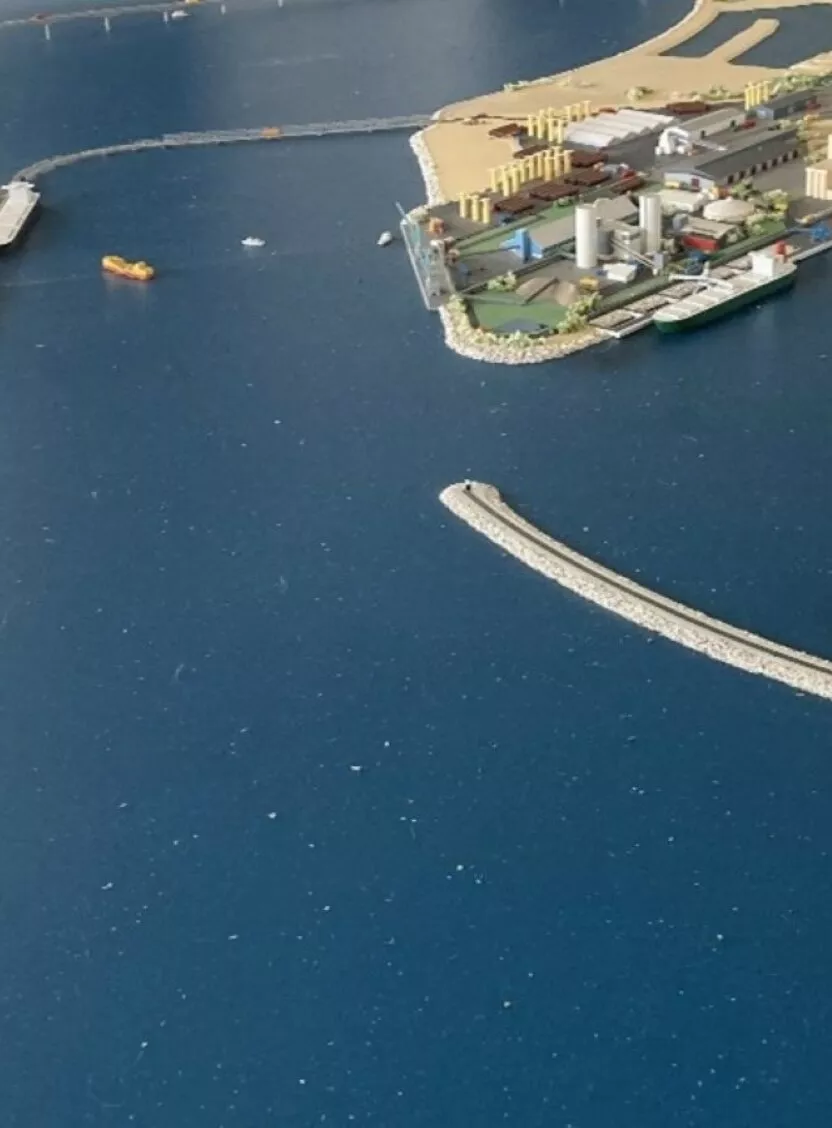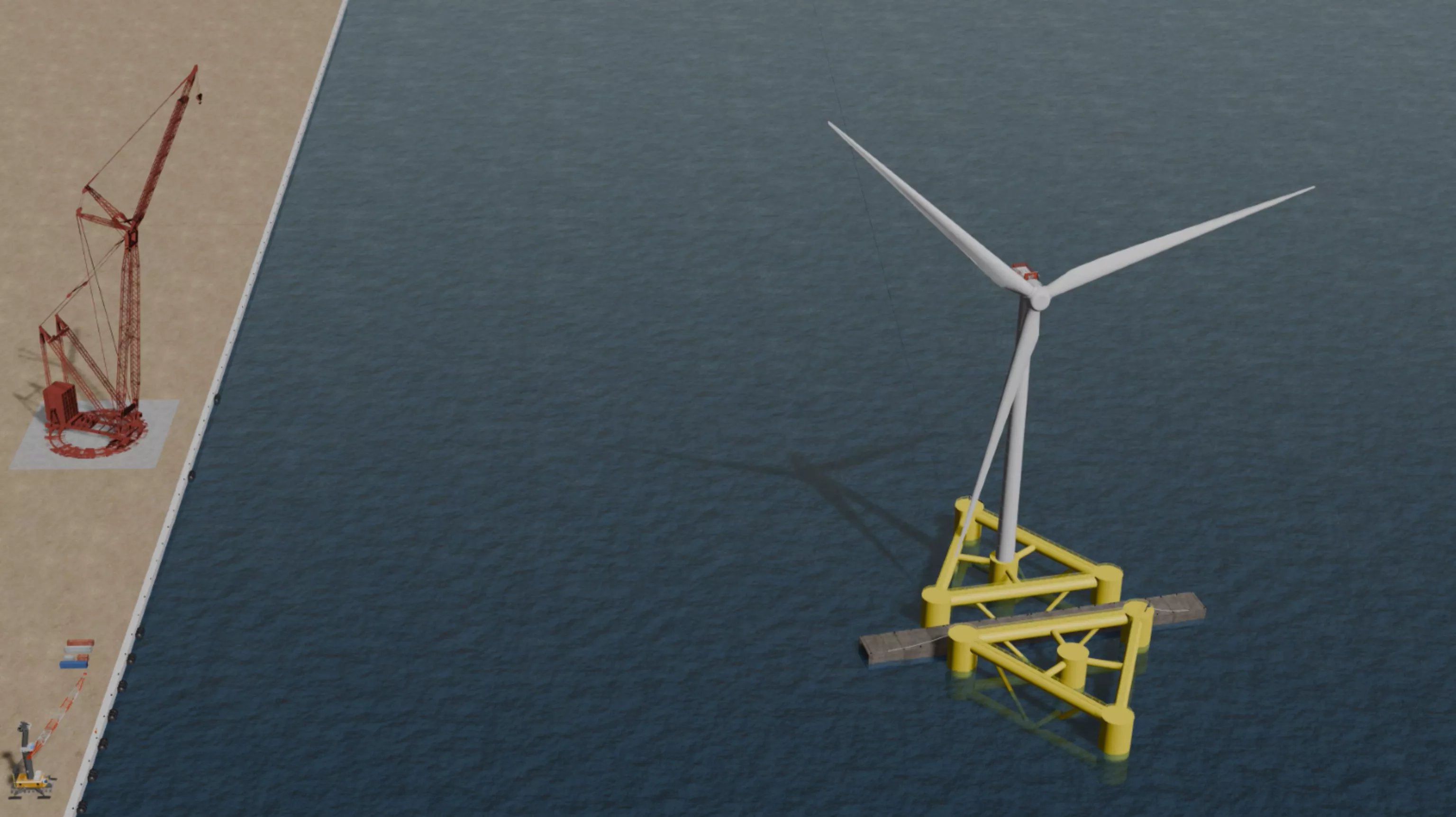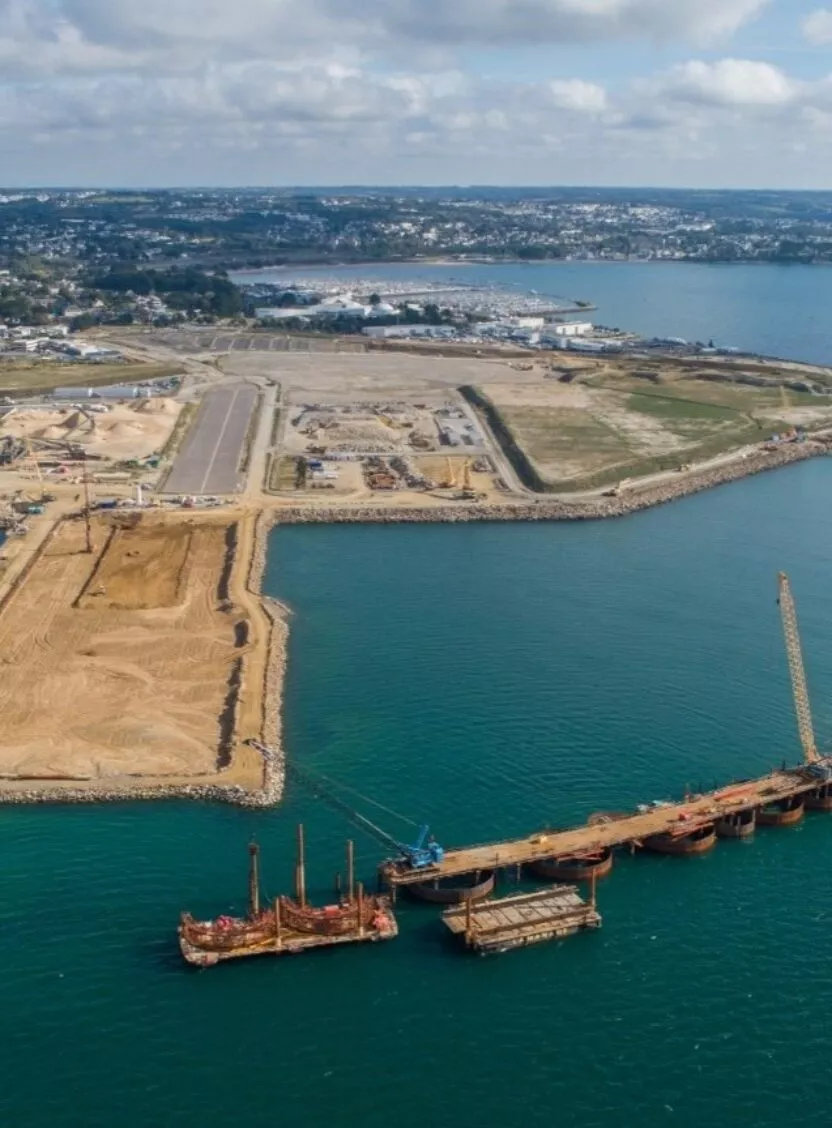
The project
Faced with the challenge of mass-producing offshore wind turbines, setec positions itself as a provider of port solutions. Among these, FLOATPORT is a proposal for a floating port area to address the available land deficit while minimizing its environmental impact, with reversibility and adaptability that broaden its application scope and improve the return on investment.
Relying on solid references of prestressed concrete floating structures design, setec has developed this floating port solution, composed of prefabricated and eco-designed floating concrete caissons- assemble on water. The structure can take different forms to cover several uses (assembly area, component storage, mooring area for floaters and wind turbines in testing or waiting, etc.). The possibility of disconnecting the elementary caissons from each other allows for other uses for the port if it is the owner, or to be towed to other ports according to the investment strategies of developers and builders, who can also be owners.
The original idea/concept received the price of the Concept during the Trophy of Port of the Future 2023 awarded by CEREMA.
The challenges
In the context of developing the offshore wind industry, Ports constitute a major logistical challenge in the mass production chain of these giant wind turbines. Indeed, floating wind turbines will be structures over 300 meters high, with most resting on floaters covering an area of about 10,000 m2 ! To meet French ambitions, nearly 3000 wind turbines need to be built in twenty years, assuming a unit power of 15 MW. The blades of the wind turbine will have a unit length of about 120 meters, and the mass of the turbine to be positioned at a height of 180 meters will be around 1000 tons. Everything is gigantic (dimensions and masses) and requires specific port logistics: construction of large storage areas and long quays, capable of supporting heavy loads (much higher than traditional port uses) and significant depths at the quay foot (at least 12 meters of water height).
These structuring input data, augmented by the choice of the type of floater (steel or concrete), require defining a specific strategy for each port wishing to contribute to the development of the offshore wind industry. Ports must deal with other existing activities, particularly managing potential co-activity generated, or working in synergy with other ports, which are naturally rather competitive.

